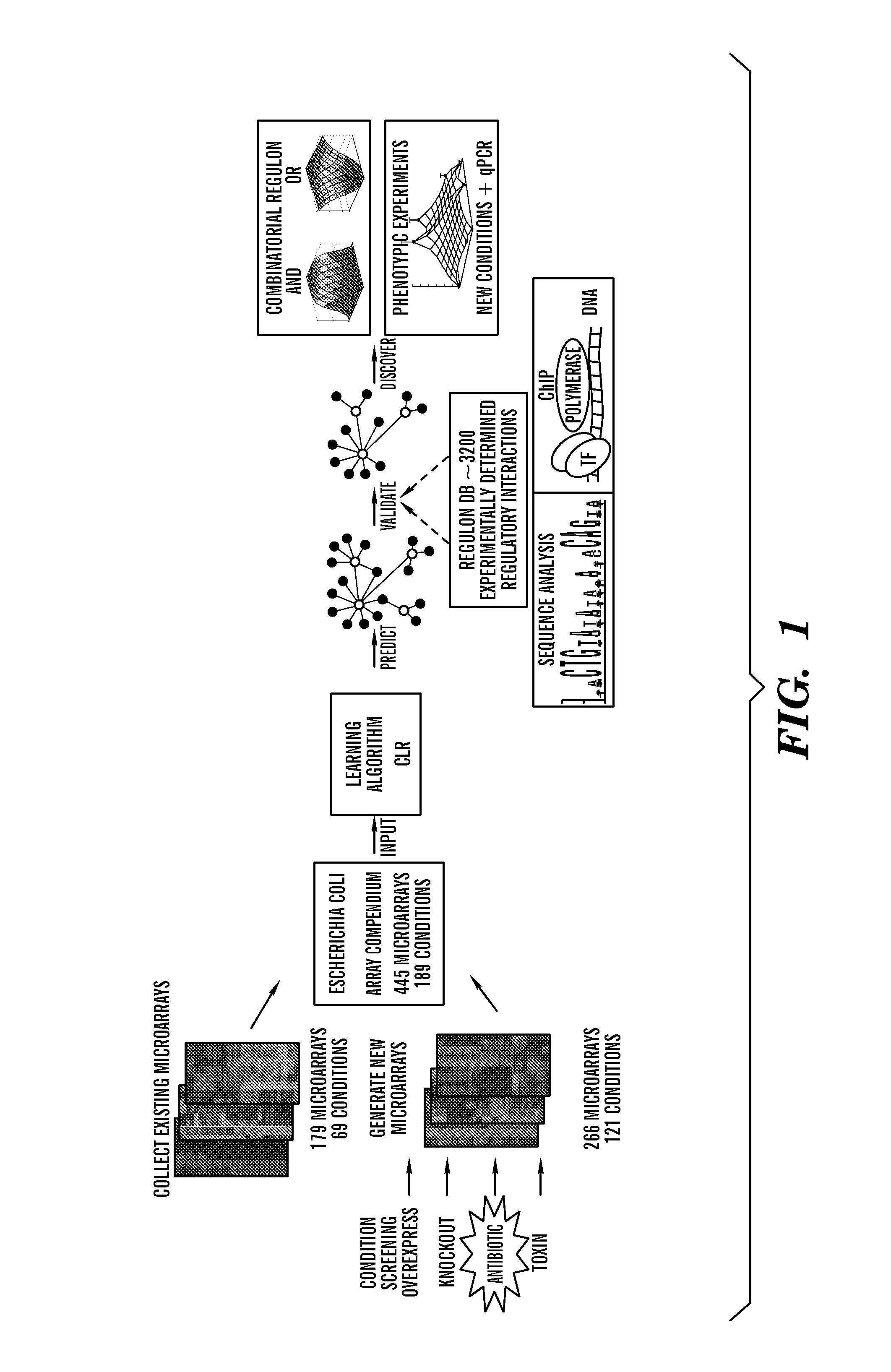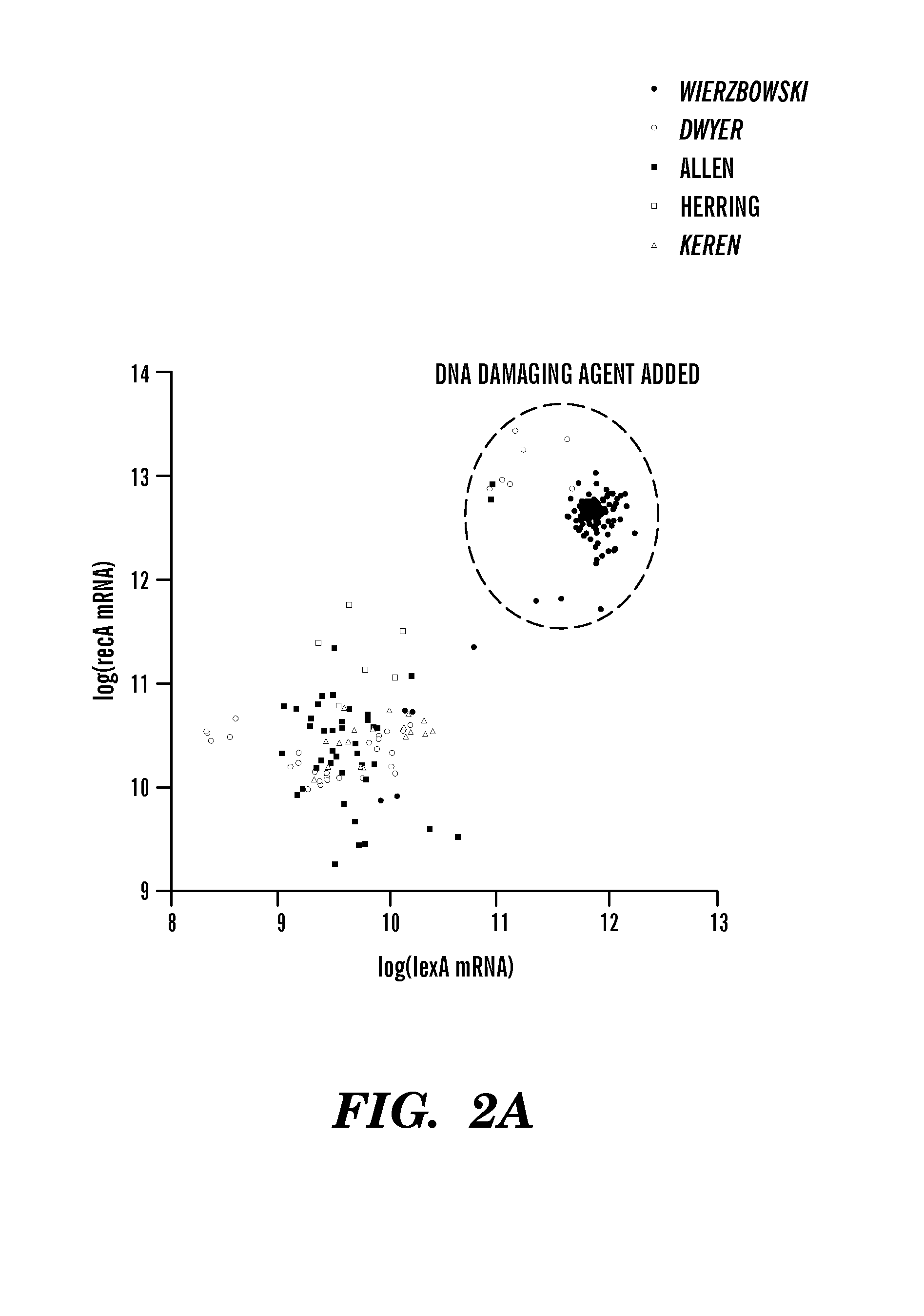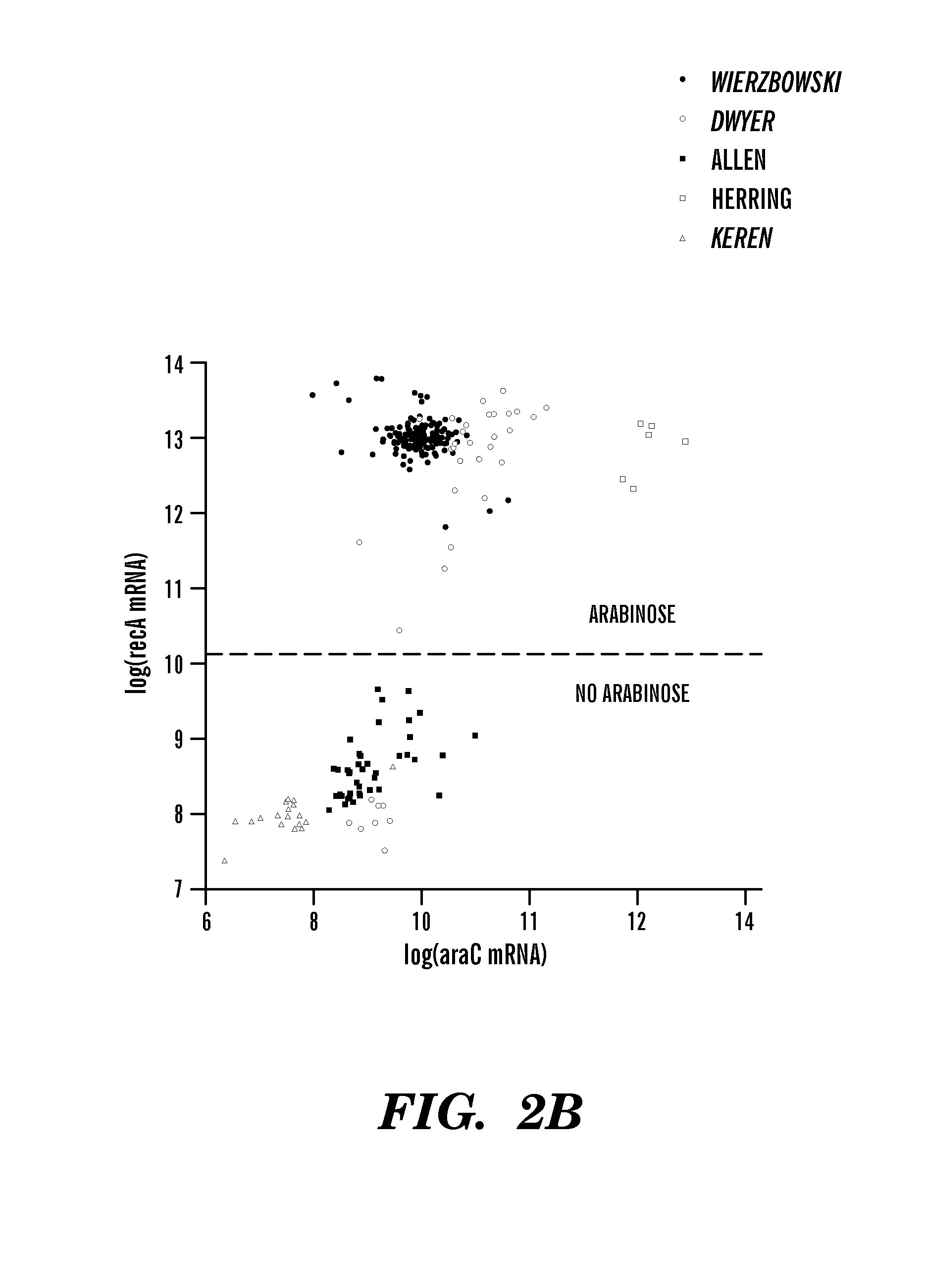Method to determine transcriptional regulation pathways in organisms
a transcriptional regulation and organism technology, applied in the field of organisms' methods to determine transcriptional regulation pathways, can solve the problems of difficult to judge the relative merits and broader utility of these approaches, and the context-specific nature of gene regulation
- Summary
- Abstract
- Description
- Claims
- Application Information
AI Technical Summary
Problems solved by technology
Method used
Image
Examples
example 1
Constructing an E. coli Compendium
[0137]Regulatory network inference with microarrays or other expression profiles known to hose of skill in the art requires a dataset where genes and transcription factors are perturbed strongly and frequently enough to enable detection of true regulatory relationships above the background of microarray noise and biological variability. Raw Affymetrix CEL files were collected for 179 microarrays from nine different publications (FIG. 1 and Table 1). These microarrays assayed 68 conditions including pH changes, growth phases, antibiotics, heat shock, different media, varying oxygen concentrations, numerous genetic perturbations, several carbon sources, and nitrate. They provide a diverse collection of perturbations in many important pathways in E. coli.
[0138]To explore pathways of particular importance to antibiotic resistance, an additional 121 conditions were assayed using 266 microarrays, including more than 50 genetic perturbations (overexpressi...
example 2
Verification of Array Data Normalization and Consistency
[0139]Regulatory network inference algorithms identify regulatory interactions by detecting causal influences between genes. FIGS. 2a, 2b, and 2d show relationships between different transcription factors and their known targets that are characteristic of the data in the E. coli microarray compendium described herein. The wide range of expression levels for the genes presented in FIG. 2 result from the cell's response to the different environmental and genetic perturbations assayed in the compendium. In each plot, the expression level of the regulated gene increases with the expression level of its regulator. For example, FIG. 2a shows the expression levels of recA, an important gene involved in the SOS-response to DNA damage, and of lexA, the primary transcription factor of the SOS-response61; each gene is highly expressed only when a DNA-damaging agent is present in the growth media. A similar situation occurs for the switch-...
example 3
Validation of CLR Algorithm Performance
[0140]Before exploring the regulatory networks inferred by the CLR algorithm, the algorithm's performance was validated using a multilevel validation approach (FIG. 1). First, the performance of CLR was tested on the genome scale using the RegulonDB set of transcriptional regulatory interactions. Second, ChIP experiments were performed to verify an additional set of interactions identified by the algorithm and thereby add new experimentally validated edges to the known set of E. coli regulatory interactions. The mature tools of sequence analysis provided a third level of validation, and allowed the discovery of new regulatory motifs in the promoters of the regulated genes.
[0141]RegulonDB Testing
[0142]The CLR algorithm was applied to all 4345 genes on the E. coli Antisense 2 microarray using the 445 profiles in the compendium taken from the M3D database. Interactions were only allowed from 332 known or predicted transcription factors to any of t...
PUM
| Property | Measurement | Unit |
|---|---|---|
| confidence threshold | aaaaa | aaaaa |
| accuracy threshold | aaaaa | aaaaa |
| accuracy threshold | aaaaa | aaaaa |
Abstract
Description
Claims
Application Information
 Login to View More
Login to View More - R&D
- Intellectual Property
- Life Sciences
- Materials
- Tech Scout
- Unparalleled Data Quality
- Higher Quality Content
- 60% Fewer Hallucinations
Browse by: Latest US Patents, China's latest patents, Technical Efficacy Thesaurus, Application Domain, Technology Topic, Popular Technical Reports.
© 2025 PatSnap. All rights reserved.Legal|Privacy policy|Modern Slavery Act Transparency Statement|Sitemap|About US| Contact US: help@patsnap.com



